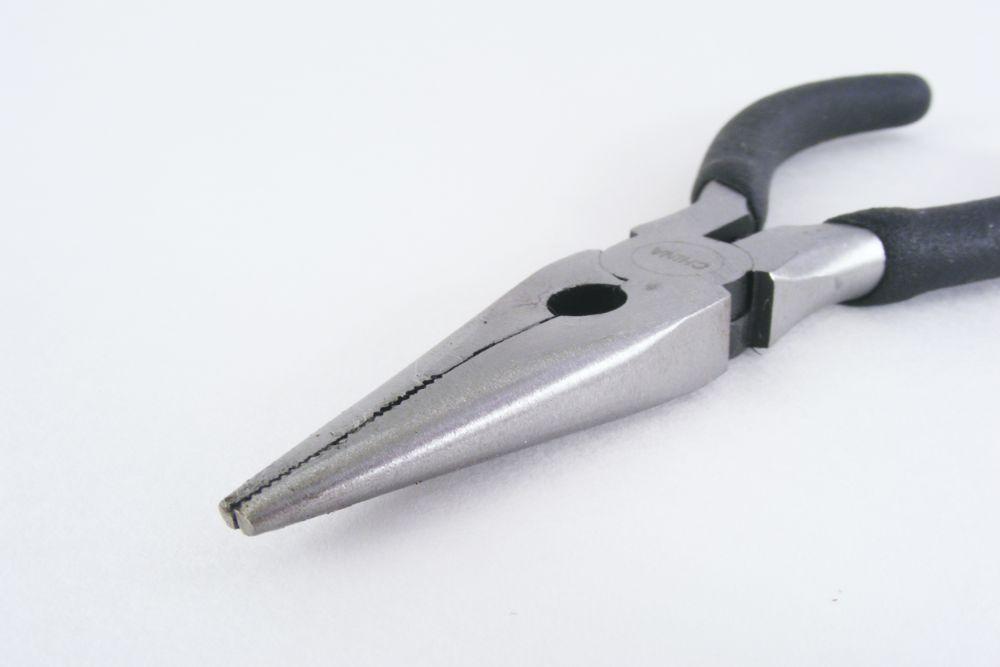Typical Tools Appliance Repair Pros Use
Operating an appliance repair company requires some specialized tools. When providing appliance repair service, you’ll frequently need to rely on items like condenser brushes, canned air, calipers, and resettable fuses in order to get the job done right.
However, most jobs require common tools that you’ll find in any standard toolbox. As you become more familiar with the appliance repair tools needed, you’ll realize that in many instances, appliance repair technicians are able to get many jobs done with screwdrivers, a putty knife, and simple replacement appliance parts.
Standard Tools
An experienced appliance repair technician has these tools within reach on any appliance repair job. With a fully stocked hardware kit, you’re sure to be able to find the right tool for the job.
Check Out the Appliance Guy’s Tool Bag for Tool Ideas
Screwdrivers
You should have a set of slot and Phillips head screwdrivers in various sizes to tackle every repair. This gives you the ability to remove casings and mounting screws inside and outside any broken appliance.
Most mounting screws are Phillips heads (the one that looks like a plus). Most appliance hardware does not feature slot screws, but this screwdriver is useful for releasing plastic and metal clips inside housings.

Screwdrivers are One of the Most Common Tools Used in Appliance Repair
Putty Knife
Your putty knife often serves the same purpose as the slot screwdriver. Washers and stoves have small clips holding the side panels together. A putty knife can even come in handy when doing a dryer repair by enabling you to release the clips.
Pro home appliance repairers cover the edge of the putty knife to prevent scratches.
Nut Driver Set
Some manufacturers build appliances so typical homeowners don’t have access to the inside. In this case, nut-topped screws secure the casing and some components inside.
It’s best to have a full set of nut drivers among your repair tools, but you’ll use a 1/4-inch nut driver most often.
Combination Wrenches
Another essential appliance repair tool is a combination wrench. Combination wrenches with an open socket end may come into play more rarely. However, having the right size wrench at hand when you need it is helpful for any appliance technician. You may need to open or close something or brace a bolt while you work the other side.
Needle-nose Pliers
Another essential appliance repair tool is a pair of needle-nose pliers. Your needle-nose pliers are a multi-use tool that makes many jobs easier to complete. You can hold small components, hold pieces together, shape wires, and crimp small clasps together with a sturdy pair of needle-nose pliers.
Needle Nose Pliers Make Precision and Working with Wires Possible
Wire Cutters
Some pliers have built-in wire cutters. However, a dedicated pair of wire cutters are an indispensable tool. They go beyond snipping wires because you can trim and cap dishwasher tines or cut new dryer ducts.
Wire Cutters are Essential if You’re Working with Wires on a Frequent Basis
Multimeter
The multimeter is a service technician’s third hand. A multimeter tells you where electricity is flowing. Burnt-out components will not pass current along a circuit. You look for gaps in the circuit with the positive and negative probes on the multimeter.
A multimeter can test the amount of electricity flowing through a component too. This is a manual test to find if a part needs replacing or repairing. You may also find that the component you test is not part of the problem.
Gloves
While they’re not a tool, work gloves protect your hands from the jungle of sharp components, circuit boards, and wires inside an appliance. Side panels made of thin metal sheets often have sharp edges that pose a danger to your hands.
Well-fitting work gloves with a protective layer insulate your hands from heat and sharp objects. Some gloves also provide some minor protection from electric shock.
Safety Goggles
You never know when some sharp piece of plastic or metal is going to fly towards your eyes. So it’s better to be safe than sorry. Use safety goggles at all times when fixing appliances as the consequences of not doing so can be serious.
Towels / Rags
Towels might not come to mind when you think of tools either. A half-dozen thick utility towels among your supplies are crucial for your appliance repair business.
Several appliances deal with water. While on a dishwasher repair or washer repair job, towels prevent a huge mess and keep your workspace safer so you don’t slip.
You can lay a towel down to place panels and components close at hand without dirtying the surrounding area. A towel is handy to clean up after finishing a repair, which customers will always appreciate.
Glides or Appliance Mat
You’ll commonly have to deal with large appliances such as refrigerators or washing machines. And it’s likely that you’ll have to move them.
Doing a refrigerator repair is much easier using glides or an appliance mat. There’s no need to tire yourself out or put in more physical effort than needed. Your back will thank you.
Specialized Tools
The tools you need for an appliance repair business include a box full of commonplace tools. You’ll also need some special tools and equipment to be a successful appliance technician.
Condenser Brushes
Condenser brushes are for cleaning soft to medium debris from condenser tubes. They come in various diameters and materials such as carbon steel and nylon. You’ll use condenser brushes on any appliance with tubes for condensation like air conditioning units and refrigerators.
You might clean washing machine hoses with condenser brushes as well.
Canned Air
Canned air, also called an air duster, is an essential tool for appliance repair. Inner components gather dust and grime that keep them from working. Thorough cleaning with compressed air can save a customer from replacing an appliance part.
Despite the name, canned air is not safe to breathe. It contains a refrigerant and propellant requiring proper ventilation when in use. Industrial-strength aerosol dusters contain HFC-134a which is found in modern air conditioning systems. Off-the-shelf dusters usually contain HFC-152a or CO2.
Calipers
Calipers are a measuring tool for gauging the distance between two points. Some have a ruled scale or a digital display. As an appliance technician, you’ll use calipers to measure fine spaces for components and tools inside appliance cabinetry. It’s a tool you may not use often, but you’ll be glad to have it when the need arises.
Resettable Fuses
A resettable fuse is also known as a mulitfuse or polyswitch. The technical name is polymeric positive temperature coefficient device (PPTC).
Resettable fuses function as overcurrent protection. They protect a circuit from too much current and overheating.
Polyswitches range according to voltage. If a circuit with resettable fuse overloads, the excess current melts the polymer. The polymer increases to form a high-resistance state. When you cut the power, the polymer returns to a low-resistance state.
Resettable fuses are inexpensive to keep stocked for various appliance repairs.





